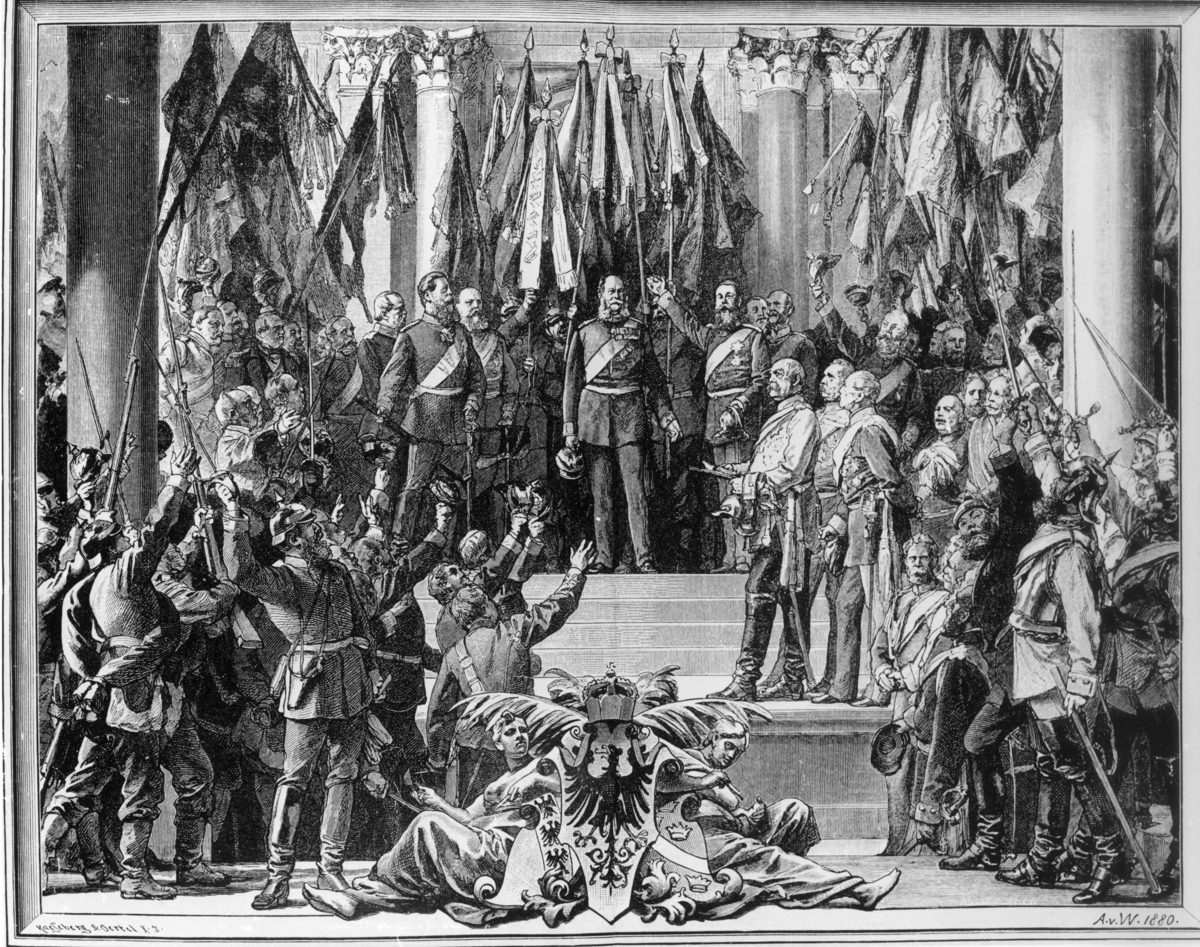Abstract
This wood engraving of The Proclamation
of the German Empire differs significantly from the “palace
version” of 1877. Among other changes, Anton von Werner fundamentally
altered the composition and perspective and portrayed the entire scene
in a more dramatic and historically significant light. This later
rendering pays even greater attention to the assembled officers’
uniforms, depicts their swords in the more triumphant raised position,
and shows the principal figures in greater proximity. The most
significant change, perhaps, can be seen in Bismarck’s attire. He now
appears in the white dress coat of the Cuirassiers—as opposed to the
drab blue uniform that he actually wore on the day of the proclamation.
(Apparently, he had neglected to bring formal attire to France.) In the
earlier palace version, Werner held fast to sartorial truth and depicted
Bismarck in blue. But in this and subsequent versions of the scene,
including the famous Zeughaus (1882)
and Friedrichsruh (1885) versions, Werner portrayed Bismarck in his
white gala uniform. It was, as Werner knew, what he
should have worn according to
protocol.
